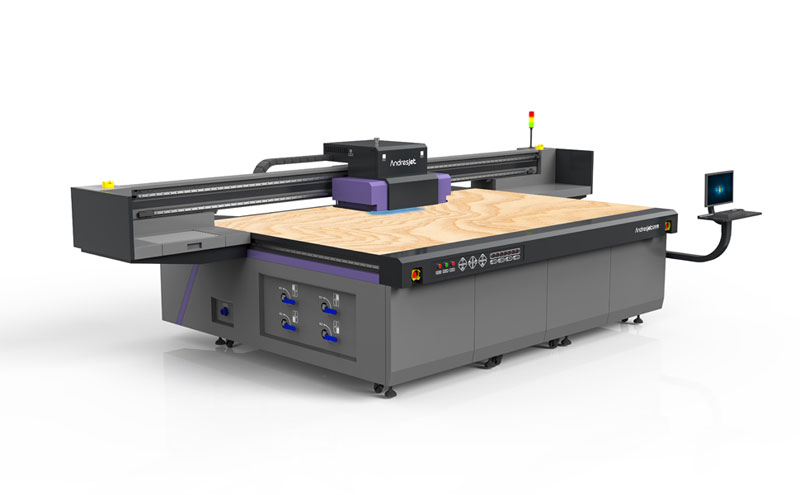UV Flatbed Printer: Environmental Considerations
UV Flatbed Printer: Environmental Considerations
In the realm of digital printing, UV flatbed printers have emerged as a versatile and efficient technology, revolutionizing the way we produce high-quality prints on various substrates. From signage to packaging, these printers offer unparalleled precision and speed. However, as with any industrial process, environmental considerations are paramount. This article delves into the environmental implications of UV flatbed printing, exploring its eco-friendliness, waste management, energy consumption, and potential for sustainable practices.

UV Flatbed Printing: An Overview
UV flatbed printers utilize ultraviolet (UV) light to cure ink instantly after it is applied to the material. This process allows for rapid printing on a wide range of surfaces, including plastics, glass, metal, wood, and more. The technology’s ability to print directly onto materials without the need for pre-treatment or primers makes it highly versatile and reduces material waste. UV inks are formulated to be cured by UV light, resulting in durable, scratch-resistant prints that can withstand harsh environments.
Eco-Friendliness of UV Inks
One of the primary environmental considerations in UV flatbed printing lies in the composition of UV inks. Traditional solvent-based inks contain volatile organic compounds (VOCs) that can be harmful to both human health and the environment. In contrast, UV inks are generally considered more eco-friendly because they contain no solvents and emit minimal VOCs during the printing process. This reduction in VOC emissions contributes to better air quality in printing facilities and surrounding areas.
Moreover, UV inks often have a higher solid content than solvent-based inks, meaning less ink is required to achieve the desired opacity and color intensity. This efficiency in ink usage translates to reduced consumption and waste generation, aligning with sustainable manufacturing principles.
Energy Consumption and Carbon Footprint
While UV flatbed printers offer numerous advantages, their energy consumption is a significant environmental concern. The UV curing process requires powerful UV lamps, which consume considerable energy. Additionally, the printers themselves, especially larger models, have high electricity demands during operation.
To mitigate this, manufacturers are increasingly incorporating energy-efficient technologies into their UV flatbed printers. For instance, LED UV lamps are becoming more prevalent due to their lower power consumption and longer lifespan compared to traditional mercury-based UV lamps. These advancements not only reduce energy costs for printer operators but also contribute to a smaller carbon footprint.
Waste Management and Recycling
Effective waste management is crucial in any printing process, and UV flatbed printing is no exception. While the process generates less waste compared to some traditional printing methods, there are still materials that require proper disposal or recycling.
Ink waste, for example, must be handled carefully. Unused or expired UV inks should be collected and disposed of according to local regulations, often involving specialized waste management companies. Some ink suppliers offer ink recycling programs, where leftover ink can be returned and reprocessed, further reducing waste.
Substrate waste is another consideration. In a perfect scenario, all materials used for printing would be utilized fully, but in reality, scraps and offcuts are generated. Printers can adopt strategies to minimize waste, such as optimizing print layouts to use material more efficiently and exploring opportunities for scrap material recycling or reuse.
Sustainable Practices in UV Flatbed Printing
Adopting sustainable practices in UV flatbed printing involves a holistic approach that encompasses not only the printing process itself but also the entire product lifecycle. Here are some key strategies:
Ink and Material Selection: Choose UV inks and substrates that are eco-friendly and recyclable. Look for inks with low VOC content and substrates sourced from sustainable or recycled materials.
Energy Efficiency: Invest in energy-efficient UV flatbed printers and implement measures to reduce energy consumption, such as using LED UV lamps and optimizing print schedules to minimize idle time.
Waste Reduction and Recycling: Implement waste reduction strategies, such as optimizing print layouts and reusing or recycling scrap materials. Participate in ink recycling programs to minimize ink waste.
Responsible Sourcing: Ensure that both inks and substrates are sourced from suppliers with strong environmental policies and a commitment to sustainability.
Continuous Improvement: Regularly review and update printing processes and materials to incorporate the latest eco-friendly technologies and practices.
Conclusion
UV flatbed printing offers a powerful and versatile solution for high-quality digital printing on a wide range of substrates. However, its environmental impact cannot be overlooked. By adopting eco-friendly inks, implementing energy-efficient technologies, managing waste effectively, and embracing sustainable practices throughout the printing process, the industry can minimize its ecological footprint.
As consumers and businesses increasingly prioritize sustainability, the adoption of environmentally responsible practices in UV flatbed printing will not only contribute to a healthier planet but also enhance the reputation and competitiveness of printing companies. By staying at the forefront of eco-innovation, the UV flatbed printing sector can continue to thrive while playing an active role in protecting the environment for future generations.
